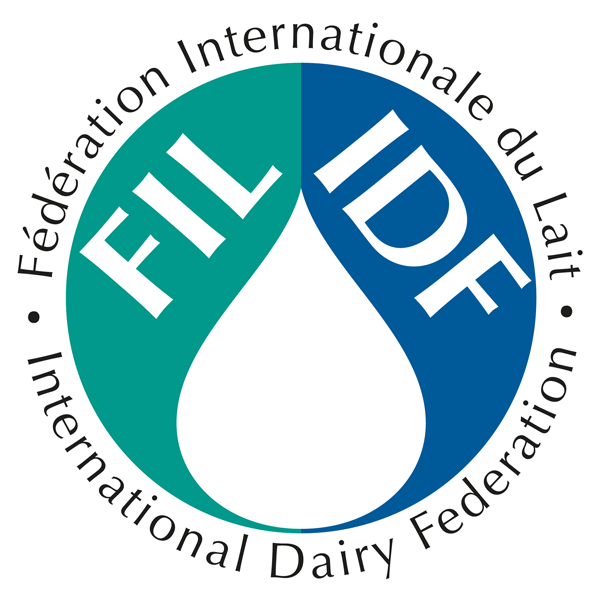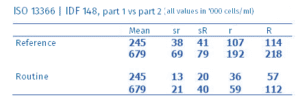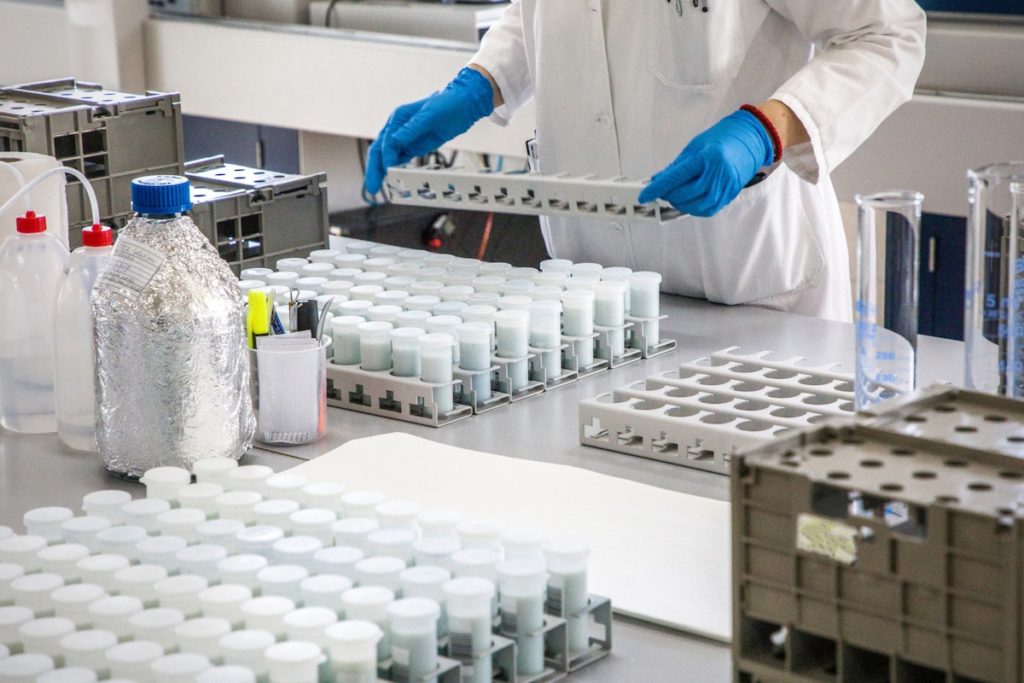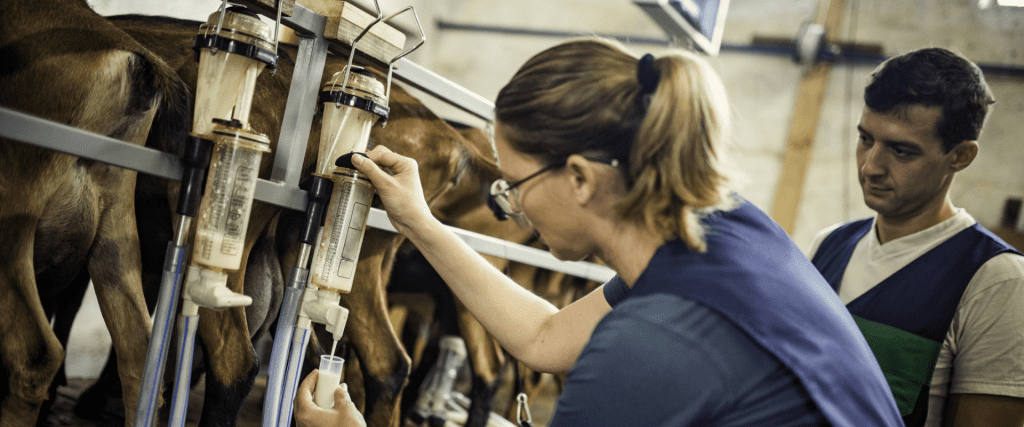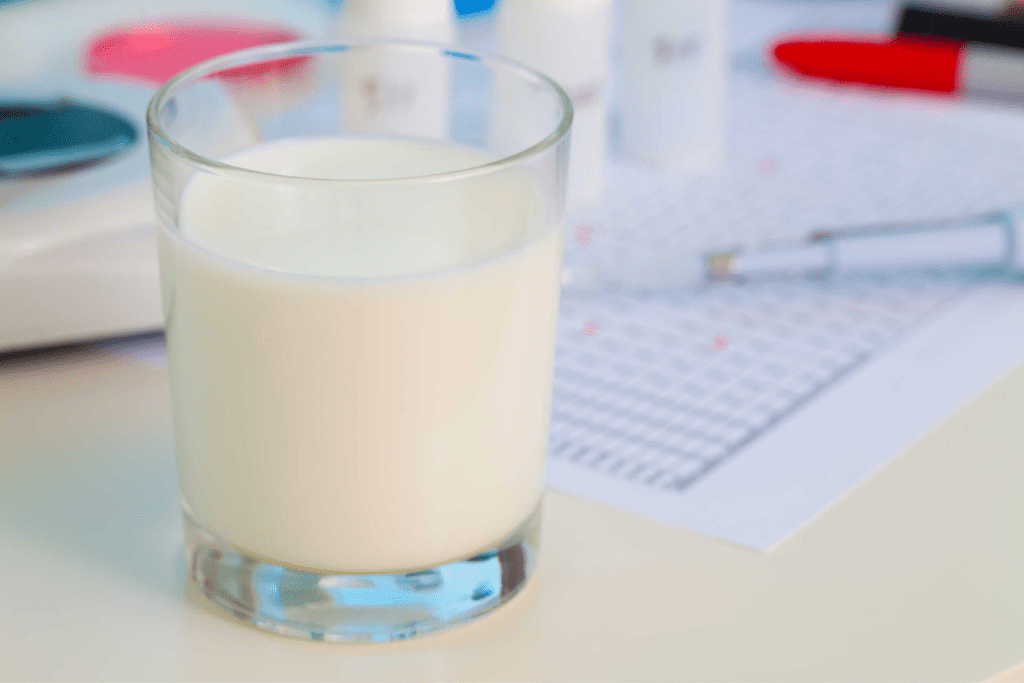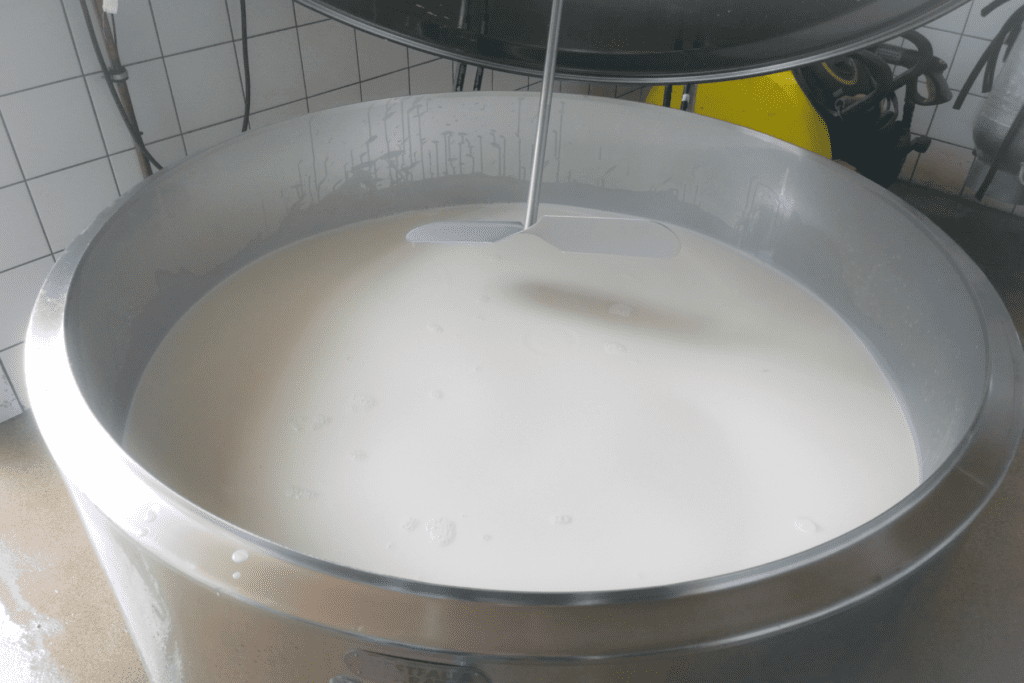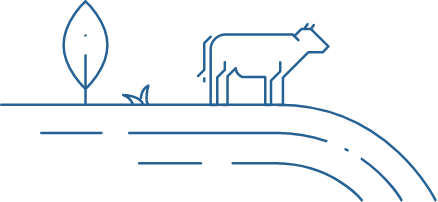Share this page
Reference system for somatic cell counting
The IDF/ICAR project group to develop a reference system for somatic cell counting
in raw milk.
IDF and ICAR (International Committee for Animal Recording) are working on a joint project to set up an international reference system for somatic cell counting in raw milk.
Meeting the need for worldwide equivalence of analytical results.
Global markets with expanding streams of exported/imported goods involve a focused attention on equivalence of analytical results. Analytical results also play a major role in free and fair trade.
Independent local calibration cannot always fulfil the rising demands for worldwide equivalence of analytical results.
Sometimes worldwide equivalence of analytical results cannot be safeguarded by “solely” producing standardized analytical methods. In addition, with some parameters, standardized reference materials are lacking and the reference method shows limited performance.
Sophisticated large scale reference systems are therefore needed where traditional calibration schemes lack precision and effectiveness.
Why somatic cell counting?
Somatic cell counting is one of the most frequently performed tests worldwide, estimated at over 500.000.000 tests/year.
Somatic cell counting – as an indicator of udder health status – is relevant in food legislation, payment of raw milk, affect milk composition and quality, and also has a major impact on farm management and breeding programs.
What is a reference system?
A reference system is a tool to provide a commonly acknowledged reference level for a given analytical parameter. Joint recognition by regulatory bodies, competent authorities and other stakeholders is essential for an effective functioning. A more extensive explanation on the background and aims as well as on the elements of reference systems was published in the Bulletin of the IDF 427/2008.
A reference system is a systematically developed anchoring system that is fed by different types of information from various sources in a laboratory network structure:
- Reference method (direct) results
- Routine method (indirect) results
- Proficiency testing

The issues of ensuring reliability
Reliable somatic cell counting by reference method is a major challenge:
- Reference method is a direct microscopic cell counting of stained cells. What to count and what not to count can be questioned. The reference method derives from old techniques, and is tedious, cumbersome and has poor performance
- The target analyte of routine methods is not commonly accepted as “reference” basis
- Secondary reference materials have limited shelf life and batch homogeneity default during storage
- As a consequence, several routine laboratories have set up their own ‘reference system’ in order to anchor their counting level
Current project group activities
- Promotion of newly launched primary reference material
- Implementation of primary reference material around the world
- Development and evaluation of a potential new reference method for somatic cell counting
- Investigation of reference method for differential somatic cell counting
- Organizational matters

Analytical results should be comparable and equivalent anywhere anytime anyhow
FREQUENTLY ASKED QUESTIONS
When goods are moving, analytical results should be comparable and “equivalent”
- Worldwide
- In the long run
- Between different methods: The equivalence of analytical results should be reached at any place at any time;
- A reference system is defined as an anchoring system fed by a network of laboratories. It will be a tool to improve and safeguard equivalence, where the traditional approach of calibrating with reference methods shows limited performance
Routine methods are traditionally calibrated by using a calibration set of reference materials which reference values have been determined by reference method.
In many cases, the precision of the reference method is not satisfactory and gives uncertainty to the reference value. In addition, when applied in only one laboratory, the reference method cannot guarantee a reliable enough reference value. The stability and homogeneity of reference materials (RM) is also a key to get reliable reference. For some parameters, equivalence is difficult to be achieved by straightforward analytical means or reference materials.
Somascope TM, Somacount TM, Bactocount TM, Nucleocounter TM, DCC Counter TM, Fossomatic TM, etc.
A primary reference material for somatic cell counting has been developed. This material allows providers of reference materials to anchor their somatic cell count level to the new material so results are fully aligned. The material can further be used to calibrate the routine methods directly. The primary reference material for somatic cell counting thus provides the basis for harmonisation of somatic cell counting around the world.
Key messages
- A reference system is a complement to the ‘traditional’ way of calibrating routine methods.
- A harmonized worldwide reference system will safeguard the validity and equivalence of analytical results anywhere, anytime, anyhow.
- Its implementation in the dairy sector will promote the acceptance and mutual confidence in analytical results, thereby helping free and fair trade.
- Somatic cell counting is the best parameter to explore the feasibility of a worldwide reference system, because the SCC reference method has poor performance.
- The potential benefit of its implementation will then be demonstrated for other parameters.
Learn about the project's history
IDF and ICAR have developed a series of newsletters to track the work of this very complex project spanning several years:
For more information about the project, contact Aurélie Dubois-Lozier.
Learn more about methods of analysis & sampling
The breadth of issues IDF covers in its work is extensive. Find out more about the work we do.
Methods of Analysis & Sampling
Facilitating trade and building trust in the dairy sector through standardized methods for the safet...
Read MoreAnimal Health & Welfare
IDF work on animal health and welfare focuses on dialogue and discussion on, and form consensus abou...
Read MoreRelated reports & publications
IDF provides a permanent source of authoritative scientific and other information on a whole range of topics relevant to the dairy sector.
Related news & insights
IDF provides a permanent source of authoritative scientific and other information on a whole range of topics relevant to the dairy sector.
Improving consistency in milk somatic cell counting – Guidance on application of EC JRC Certified Reference Material released
Joint guidance prepared by IDF and ICAR represents a further step towards better equivalence in somatic cell counting worldwide. Milk somatic cell....
Joint IDF and ICAR initiative to improve consistency in milk somatic cell counting
Certified reference materials launched by EC Joint Research....
